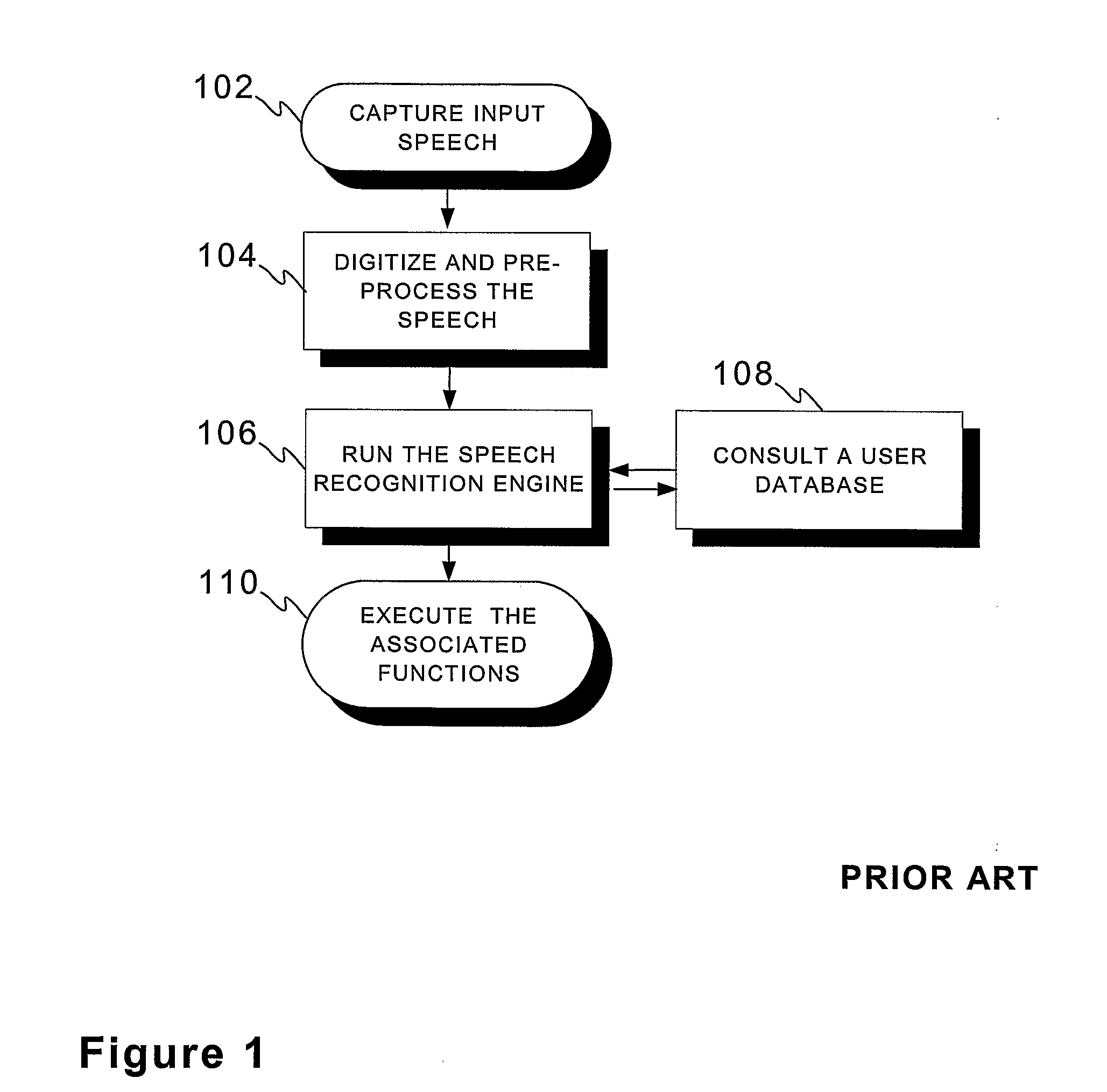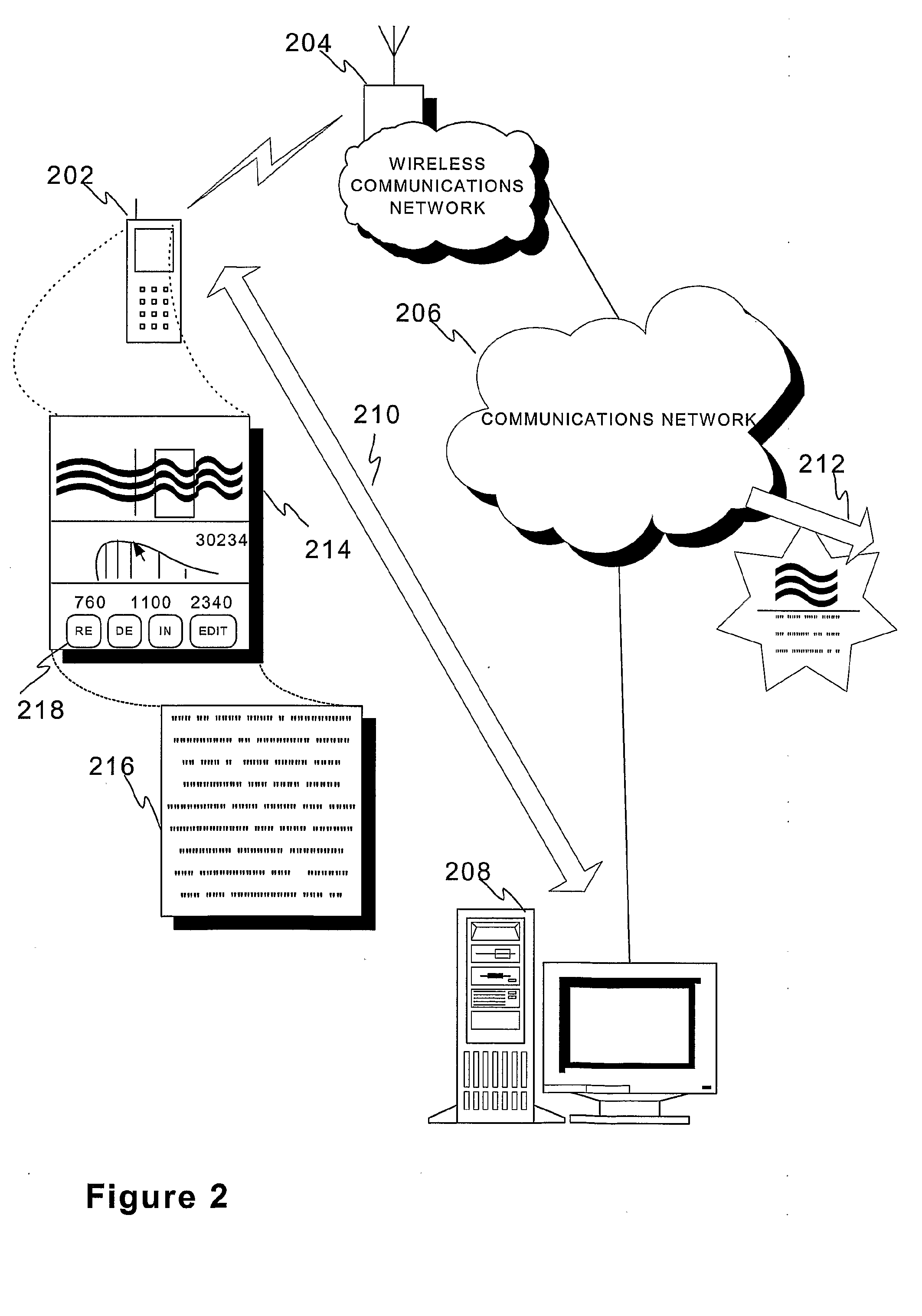Method, a system and a device for converting speech
- Summary
- Abstract
- Description
- Claims
- Application Information
AI Technical Summary
Benefits of technology
Problems solved by technology
Method used
Image
Examples
Embodiment Construction
[0046]FIG. 1 was already reviewed in conjunction with the description of related prior art.
[0047]FIG. 2 discloses a sketch of a system, by way of example only, adapted to carry out the conversion arrangement of the invention as described hereinbefore under control of a user who favours recording his messages and conversations instead of typing them into his multipurpose mobile electronic device providing a UI to the rest of the system. The mobile electronic device 202, hereinafter device 202, such as mobile terminal or a PDA with internal or external communications means, e.g. a radio frequency transceiver, is operable in a wireless communications network 204 like a cellular network or WLAN (Wireless LAN) network capable of exchanging information with the device 202. Typically wireless networks comprise radio transceivers called e.g. base stations or access points for interfacing the terminal devices. Wireless communication may also refer to exchanging other types of signals than me...
PUM
 Login to View More
Login to View More Abstract
Description
Claims
Application Information
 Login to View More
Login to View More - R&D
- Intellectual Property
- Life Sciences
- Materials
- Tech Scout
- Unparalleled Data Quality
- Higher Quality Content
- 60% Fewer Hallucinations
Browse by: Latest US Patents, China's latest patents, Technical Efficacy Thesaurus, Application Domain, Technology Topic, Popular Technical Reports.
© 2025 PatSnap. All rights reserved.Legal|Privacy policy|Modern Slavery Act Transparency Statement|Sitemap|About US| Contact US: help@patsnap.com



